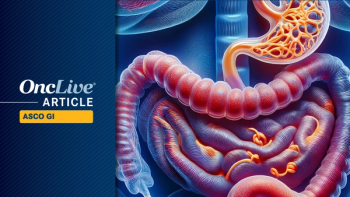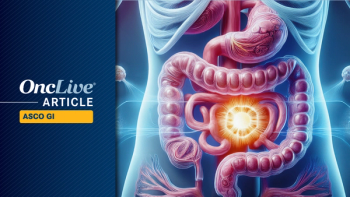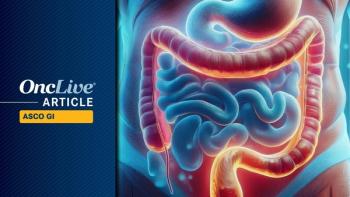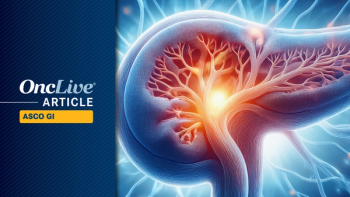
VERU-111 Demonstrates Preliminary Viability in Pretreated mCRPC
Continuous administration of the novel tubulin inhibitor VERU-111 proved to be safe and demonstrated antitumor activity, evidenced by prostate-specific antigen reductions, objective tumor responses, and durable activity, in men with previously treated metastatic castration-resistant prostate cancer.
Continuous administration of the novel tubulin inhibitor VERU-111 proved to be safe and demonstrated antitumor activity, evidenced by prostate-specific antigen (PSA) reductions, objective tumor responses, and durable activity, in men with previously-treated metastatic castration-resistant prostate cancer (mCRPC), according to findings from a phase 1b/2 study that were presented during the 2020 ESMO Virtual Congress.
At the recommended phase 2 dose (RP2D) of 63 mg daily, 10 men reached at least 4 cycles of continuous dosing; 6 experienced a decrease in PSA, 4 experienced at least 30% decline in PSA, and 2 experienced at least 50% decline in PSA. Best objective tumor responses consisted of 2 partial responses and 8 cases of stable disease; an additional 2 objective responses occurred in patients who did not reach cycle 4 of treatment.
“In preclinical studies, VERU-111 can bind to colchicine, resulting in inhibition of microtubule polymerization,” said Mark C. Markowski, MD, lead study author and assistant professor of oncology at The Johns Hopkins Sidney Kimmel Comprehensive Cancer Center, in a virtual presentation of the data. “It can also decrease the production of several beta isoforms of tubulin. Unlike other taxane chemotherapy, it’s not a substrate for multi-drug resistant proteins or CYP3A4.”
Furthermore, VERU-111 has demonstrated activity in several cancer cell lines, including prostate, breast, and pancreas. In particular, VERU-111 can cause apoptosis in taxane resistant and enzalutamide (Xtandi)-resistant prostate cancer cell lines.
The phase 1b dose-escalation portion of the trial enrolled 39 patients across 7 sites in the United States. To be eligible for enrollment, men with mCRPC had to have received 1 prior androgen receptor (AR)-targeted therapy; 1 line of taxane-based chemotherapy for mCRPC was allowed. Investigators tested a 2-part dosing schedule using a standard 3 + 3 dose-escalation strategy across the following dose levels: 4.5 mg (n = 3), 9 mg (n = 5), 18 mg (n = 6), 27 mg (n = 6), 36 mg (n = 6), 45 mg (n = 7), 54 mg (n = 9), 63 mg (n = 15), 72 mg (n = 13), and 81 mg (n = 3).
In the 7-day dose schedule, VERU-111 was administered orally on days 1 through 7 every 21 days. In the expanded-dose schedule, VERU-111 was administered orally on days 1 through 14 every 21 days. If the 14-day dosing schedule proved safe, VERU-111 was administered continuously until disease progression or unacceptable toxicity.
Regarding patient demographics, the median age was 74. The majority of patients were white; 21% were African American and 8% were Hispanic. The majority of patients had an ECOG performance status of 0 (54%) or 1 (41%), and more than half of patients (55%) had bone only metastatic disease. Just less half of patients (44%) had received prior treatment with abiraterone acetate (Zytiga) and enzalutamide, and 23% had taxane exposure.
The maximum-tolerated dose was 72 mg. However, due to the high incidence of grade 3 or higher diarrhea, investigators opted to proceed with a RP2D of 63 mg.
The median duration of treatment without radiographic progression was greater than 11 months (range, 6.0-17), and half of men who reached cycle 4 of treatment remain on study (n = 5).
Included in the virtual presentation was a case study of a patient who experienced an objective response. The man was 88 years old, with Gleason 9, node-only mCRPC. The patient had received sipuleucel-T (Provenge), enzalutamide, and abiraterone.
On screening CT scan, the target legion in the retroperitoneal lymph node measured 1.7 cm x 1.5 cm. The patient’s on-treatment scan measured 1.1 cm x 1.0 cm, reflecting a 33% decrease in size to a nonpathologic node.
In addition, the patient experienced a 63% reduction in PSA level within the first cycle of treatment and remained on study for over 16 months.
“On coronal imaging, we saw very necrotic and reduced size of the retroperioneal lymph nodes with treatment,” said Markowski.
Among all patients who had been treated with at least 1 dose of at least 63 mg of VERU-111 daily (n = 16), the mean duration of treatment was more than 6.8 months (range, 0-15.4); the median duration of treatment was more than 5.8 months.
Excluding patients that discontinued VERU-111 due to an AE (n = 11), the mean duration of treatment was more than 9.0 months (range, 2-15.4+), and the median duration of treatment was more than 9.8 months.
Among patients who remain on study (n = 7), the mean duration of exposure was more than 10.2 months (range, 4.2-15.4+), and the median duration of exposure was more than 10.5 months.
In terms of safety across dose levels, any-grade treatment-related adverse effects (TRAEs) included anemia (n = 6), anorexia (n = 3), decreased appetite (n = 8), diarrhea (n = 38), dizziness/light-headedness (n = 3), dysgeusia (n = 4), elevated alanine transaminase (n = 5), elevated aspartate aminotransferase (n = 5), fatigue (n = 24), hyponatremia (n = 4), nausea (n = 21), neutropenia/neutrophil decrease (n = 5), vomiting (n = 8), and weight loss (n = 8).
Grade 3 or greater TRAEs across dose levels included anemia (n = 1), diarrhea (n = 3), fatigue (n = 3), nausea (n = 3), and vomiting (n = 1).
In the 63 mg cohort, any-grade TRAEs included decreased appetite (n = 1), diarrhea (n = 11), dysgeusia (n = 2), fatigue (n = 3), nausea (n = 7), and vomiting (n = 3). Grade 3 or greater TRAEs included fatigue (n = 1) and nausea (n = 1).
“The most common toxicity was diarrhea, fatigue, and nausea; most [cases] were low grade. Of note, we did not observe any neurotoxicity, and the incidence of neutropenia was [low] and low grade,” said Markowski.
A total of 25 patients were dosed with 63 mg of VERU-111 daily for at least 1 cycle.
All AEs in this cohort were grade 1/2 and included diarrhea (n = 17; 18%), nausea (n = 8; 32%), decreased appetite (n = 5; 20%), constipation (n = 4; 16%), fatigue (n = 4; 16%), vomiting (n = 4; 16%), dysgeusia (n = 3; 12%), weight loss (n = 3; 12%), abdominal cramping (n = 2; 8%), anemia (n = 2; 8%), edema in the lower extremity (n = 2; 8%), and low white blood cell (WBC) count (n = 2; 8%).
Similarly, all drug-related AEs were grade 1/2 and included diarrhea (n = 14; 56%), nausea (n = 6; 24%), decreased appetite (n = 3; 12%), fatigue (n = 3; 12%), dysgeusia (n = 3; 12%), weight loss (n = 3; 12%), vomiting (n = 2; 8%), and low WBC count (n = 2; 8%).
Only 1 patient experienced drug-related grade 3 fatigue at this dose level that resolved after a dose reduction to 54 mg.
The phase 2 portion of the study, which will continue to evaluate the continuous 63 mg dose, is ongoing and is expected to complete accrual in the fourth quarter of 2020. Investigators plan to enroll 40 patients who have received at least 1 prior AR-targeted therapy and have not been exposed to taxane for mCRPC.
Radiographic progression-free survival will serve as the primary end point of the study, wherein safety will also be evaluated.
Reference
Markowski MC, Eisenberger MA, Tutrone R, et al. Phase 1b/2 study of VERU-111, novel, oral tubulin inhibitor, in men with metastatic castration-resistant prostate cancer (mCRPC) who failed an androgen blocking agent. Presented at: 2020 ESMO Congress. September 19-21, 2020; Virtual. Abstract 615MO.

























































































